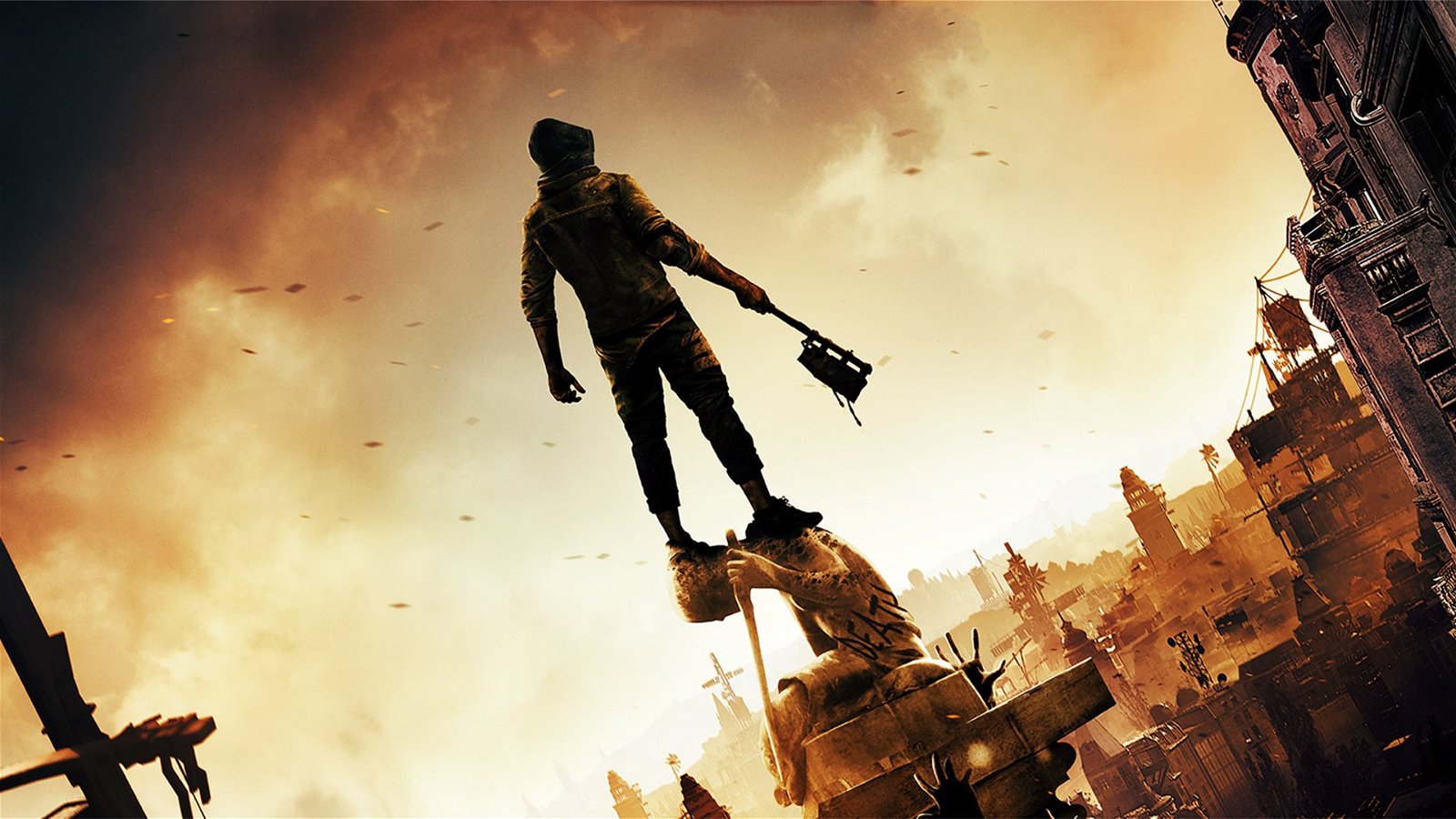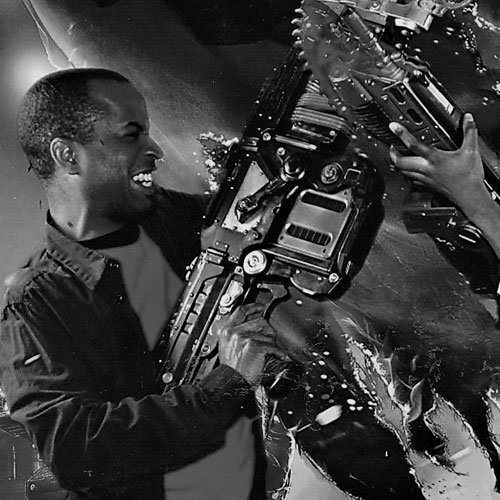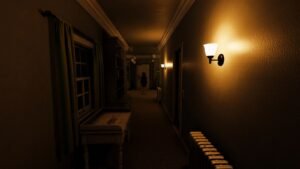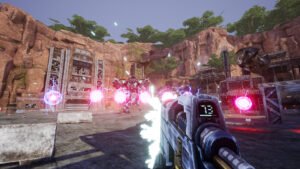When Dying Light 2: Stay Human’s already long-awaited release date of December 7th, 2021 was hastily pushed back to February 4th, 2022, I was likely among the few fans of the franchise that smiled, drew a long breath, and let out a deep sigh of relief. As I saw it, the delay would prevent the first-person-parkour-survival-horror-action adventure from getting lost in the immediate wake of this Fall’s bigger budget first-person shooter releases like Call of Duty: Vanguard and Battlefield 2042.
More importantly, it would also buy the game some much-needed breathing room between itself and Microsoft’s upcoming 500-pound gorilla, Halo Infinite, whose headline-stealing announcement of a December 8th launch just days after Dying Light 2’s original release date reveal instantly drowned out all the marketing fanfare that developer/publisher Techland had spent several months building.
The original Dying Light, which similarly saw over a year’s worth of delays leading up to its January 2015 launch, ultimately managed to thrive in a less-crowded release window, so it stands to reason that Dying Light 2’s arrival in early February will grant the game its best chance at success.

Even better news, however, is that Techland hasn’t been squandering any of that extra time, as the developer recently invited CG Magazine along with a number of other outlets to an early “remote preview” event to play a non-final PC build of the game via Parsec streaming technology.
While streaming might not seem to be the ideal way to experience a game that’s still in development (and let’s be honest, even under the best high-speed internet conditions it really isn’t), Techland’s confidence in allowing journalists such as myself four hours to play around in and scrutinize Dying Light 2’s open-world city of Villedor as protagonist Aiden Caldwell despite the added limitations of streaming was encouraging.
Returning Dying Light players will find that the control scheme has largely remained the same, with only a few tweaks to button assignments that alter basic gameplay. Most notable is the swapping out of the dedicated kick button for a block stance instead, which when timed properly against an incoming enemy strike can knock back and stun foes (similar to how the riot shield weapon could in the original game). Pressing the attack button while in a block stance will perform the kick action, requiring players to be more deliberate in how they use it.
“Four hours was barely enough time to get a grasp of what has changed about Dying Light 2 from its predecessor in broad strokes…”
Naturally, as players gain experience points and unlock new abilities for their character in both their skill and combat trees, players will gain advanced offensive and defensive attack options as well as new traversal abilities, such as vaulting over stunned enemies to drop-kick or impale another with one’s weapon, or wall-running off a billboard to cross a large gap between buildings. Overall, parkour and combat controls felt a little stiff when compared to the original Dying Light, but this appeared to be more of a symptom of input lag than anything else.
Four hours was barely enough time to get a grasp of what has changed about Dying Light 2 from its predecessor in broad strokes, but the most notable change that encompasses just about everything is the overarching theme of the “Modern Dark Ages”. 20 years after the events of Dying Light, the virus that ravaged Harran has long spread beyond the island nation’s borders to the rest of the world, decimating humanity.
The last known remaining human city, Villedor (a.k.a. “The City), has been long isolated from the absolute chaos of infected that exists outside its massive walls, but the infected can be found inside as well, and the conflict between the three human factions fighting for control of the city, The Survivors, The Peacekeepers and The Renegades, threatens to tear humanity’s last refuge apart from the inside.

Villedor’s infrastructure has collapsed, and large-scale power generation as we know it has ceased to exist, plunging the city into an almost medieval existence. For gameplay, this means that weapons are even more cobbled together from scraps than they were in Dying Light, like axes with blades formed from crudely torn street signs, and the limited variety of guns one could find in the previous game are now extremely uncommon as few of them can still be found working.
Needless to say, the combat I experienced in Dying Light 2 was exclusively melee focused, with not a single pistol or assault rifle to be seen. That said, once players scavenge enough spare parts and materials on their travels to modify the weapons they find with new abilities like electricity, fire and even freezing attributes, combat can become extremely creative.
One new aspect of the game that I quickly found myself enjoying is the interplay between the game’s day/night cycle, the behaviours of the infected and the use of UV lights in the environment to create a compelling feedback loop that strengthens both gameplay and the narrative.
Just like in the original Dying Light, most infected are slower and weaker during the daylight hours, but now they are more susceptible to the sun’s UV rays and can even be damaged by them. For that reason, fewer zombies will appear on the street during the daytime, and they put up less of a fight, but they can also be extremely dangerous in groups when encountered inside buildings where the sun can’t reach them.
“One new aspect of the game that I quickly found myself enjoying is the interplay between the game’s day/night cycle, the behaviours of the infected and the use of UV lights in the environment…”
When night falls, however, the infected spill out onto the street to own the night, where they are more powerful and aggressive in the sun’s absence. Conversely, fewer infected remain inside buildings at night, making it easier for players to loot their nests and uncover valuable items and materials, such as fluorescent shrooms.
This is where UV light plays a much bigger role than it did in the previous game. Not only do UV lighting rigs placed at friendly camps and other spots around the city provide the few places of respite where common infected won’t attack players at night, but they also serve as charging stations for Aiden’s bio-marker, a bracelet that absorbs all available sources of UV light (sun or otherwise) and boosts his nighttime immunity against the virus, which is represented in the HUD as a depleting timer.
This timer can be reset in a number of different ways, such as standing near a UV light source, crafting and consuming medicines from the aforementioned shrooms to add time to the countdown, concocting more effective inhibitor drugs that provide a similar or more powerful effect when taken, or simply stepping back outside into daylight. If the timer fully depletes before the player is able to do any of the above, Aiden will succumb to the virus and become one of the infected, which means game over.

As someone who avoided most of the optional nighttime side missions in the original Dying Light because I was intimidated by the deadly, fast-moving volatiles that prowled the streets at night, this new-and-improved day-night cycle and its related mechanics are surprisingly compelling to me, as they appear to be great ways to empower and encourage players to brave the darkness with the lure of not just better loot but also materials that are vital to the player’s overall survival during key missions that must be completed at night.
They also dovetail perfectly into the narrative premise set up by the original game that most, if not all, humanity is already infected, with inhibitor medicines and tools such as the new bio-marker bracelet being the only means of “staying human.”
Finally, a new but potentially divisive gameplay tweak that I surprisingly found enhanced the game’s immersion is an upgradeable stamina meter that governs how long Aiden can maintain his grip while climbing.
Not only does this make the routine act of scaling buildings more perilous should Aiden run out of steam (especially at night where zombies on the ground will be happy to take his life if the fall doesn’t), it also presses players to be quicker and more strategic in solving environmental puzzles that the game presents the player with, such as fixing or restoring electricity to the windmills that power yet-unlocked camps, where stamina will likely play directly into the increased difficulty of climbing such structures later in the game.
“Even after a few hours of messing around in the demo’s two areas of Old Villedor and Central Loop, I felt like I had barely scratched the surface in respect to Dying Light 2’s other grand ambitions in game design…”
Alas, even after a few hours of messing around in the demo’s two areas of Old Villedor and Central Loop, I felt like I had barely scratched the surface in respect to Dying Light 2’s other grand ambitions in game design, such as how helping one faction versus another not only changes the narrative but also can transform the look of the city itself. This will also influence the kinds of characters you will meet and determine the kinds of resources you will have access to along your journey.
Also, as I only managed to reach Villedor’s Central Loop late in the session, I was only able to spend about 15-20 minutes with the new para glider tool, which players can use to glide across the metropolis by way of strong updrafts from air vents scattered around the city. I wasn’t able to find the franchise’s staple grappling hook unfortunately, but I can already imagine how much fun it will be to parkour and fly between rooftops and skyscrapers using both traversal tools in combination.

Although it’s been almost a whole week since I participated in the preview event, I still regularly find myself thinking about what I experienced and cannot wait to dive back in and play the full game in February. Aside from the opportunity to preview the game, participating journalists were encouraged to share what they liked and what they didn’t via an online survey as well as a brief, one-on-one discussion with a member of Techland’s preview team, and the team appeared both receptive and eager to receive feedback.
While that’s no guarantee of anything, it seems to bode well for Dying Light 2: Stay Human launching in the best possible state, provided Techland makes good use of said feedback during those additional two months of development to put out a highly polished and fully-realized product.




